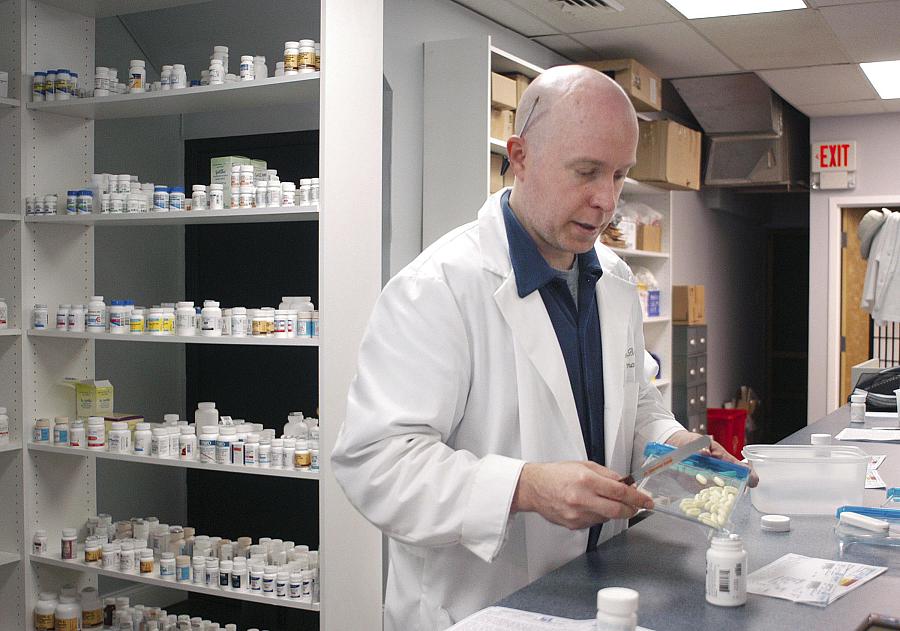Prescription Fixes: Drug tracking could do more to raise automatic red flags

William Thomas Cain/Getty Images
A number of years ago, someone bought a bunch of computer equipment using my credit card number. They were in Jamaica, and I was in Seattle. I found out because the credit card company spotted the purchases and called me, later reversing the charges and saving me from a big bill.
That’s what you might call an “unsolicited report.” One that was very helpful to me and my credit rating.
Advocates for improving drug prescription monitoring would like to see more unsolicited reports from state drug monitoring programs to drug prescribers, pharmacies, law enforcement agencies, medical boards, and others to warn them about troubling prescribing patterns. Right now, these entities barely communicate with each other or ignore each other’s communications.
Faithful readers might recall the series I wrote about the false-front clinic in Anaheim, Calif., that was responsible for distributing huge quantities of addictive drug prescriptions but appeared to have no patients walking in and out of its doors. The U.S. Drug Enforcement Agency investigated the clinic and even went after the doctors involved without notifying the state medical board.
In its recent report on prescription drug tracking programs, the Pew Charitable Trusts wrote:
Unsolicited reporting and educational and promotional initiatives are effective mechanisms to encourage enrolled prescribers to use the database and also to inform unenrolled prescribers about the value of [prescription drug monitoring programs], especially in states that lack a prescriber use mandate. States looking to send unsolicited reports can learn from experiences in Indiana, Maine, and Massachusetts; similarly, states looking to bolster educational and promotional initiatives can take cues from Florida, Maine, and New York.
What would trigger an unsolicited report? Anything that qualifies as a high-risk pattern, in theory. In practice, of course, the drug-monitoring program has to set up criteria to trigger flags in the system. This would include patients who receive multiple prescriptions from the same prescriber — or multiple prescribers — over a short period of time; combinations of drugs that are easily misused (like opioids, benzodiazepines, and muscle relaxants), or prescriptions that are in such high quantities that they would likely lead to an overdose.
What would someone who received the unsolicited report do with that information? Well, at the most basic level, it might prompt a doctor to pause and provide more comprehensive care than what’s commonly involved in writing a prescription for an opioid. The doctor might also reach out to other physicians who are also prescribing drugs to the same patient and see if they can’t all work together instead of potentially creating a situation where the patient is addicted but not actually treated for the underlying condition. If a patient has developed a substance abuse disorder, then the doctor will have a chance to work with the patient on stabilization and treatment options.
The Pew Charitable Trusts found that among functioning drug tracking programs, about two-thirds notify prescribers about patients who receive the same types of drugs from multiple prescribers. They also send warnings about signs of substance abuse disorders and the potential for an overdose.
Two-thirds is quite a change from a decade ago. Back in 2006, there were fewer drug tracking programs (30 instead of 50) and, of those, only 30 percent were actively sending these types of unsolicited reports.
The notifications generally work this way: the criteria for a notification are met, and an email is generated automatically to go to the prescriber. The emails tell the prescriber to query the drug database or to log in to their accounts to see specific information on patients. The Pew report notes:
The entire process, from data analysis to alert generation, can be scheduled to run automatically — weekly, monthly, or at other specified intervals. Some systems, such as the one in Massachusetts, include a “no-repeat” function so that prescribers will not receive more than one alert about a specific patient in a given period (e.g., three months) even if that patient meets the alert threshold at more frequent intervals. This can help reduce “alert fatigue” among providers.
Alert fatigue! We’ve all experienced it, right? How often do you read those notices from the bank telling you that you have a low balance in your checking account? (Wait, you don’t get those?)
The big question, as with all of these recommendations on fixing our drug prescription tracking systems, is do these kinds of unsolicited reports work? Do they actually flag dangerous situations before they worsen? I’ll write more about that in my next post.
---
Related Posts
Prescription Fixes: Drug databases work, but only if they are queried
Prescription Fixes: Is delegating prescription tracking to doctors’ staff the answer?

